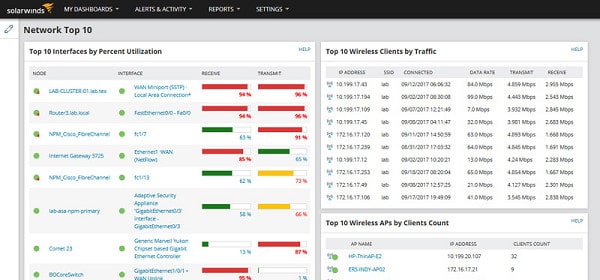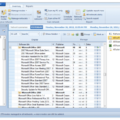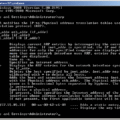LAN monitoring is an essential tool for keeping your local area network running optimally and securely. With the increased use of networks in businesses and homes, LAN monitoring has become increasingly important in ensuring that your network remains secure and functioning at peak performance.
LAN monitoring works by detecting potential network failures and performance issues such as bottlenecks. It can also identify common device issues like overloaded servers, routers, switches, and other network devices. This helps to ensure that your network is free from any problems that could potentially cause downtime or data loss.
When setting up a LAN network, it’s important to identify the services you want available on the network, how many devices will connect to it, run cables to workstations where necessary, select a switch or cable router, configure the WAN port of the cable router and enable security features like firewalls and antivirus software.
Once the LAN is set up, you’ll need to start monitoring it regularly. By doing this you can ensure that all of your devices are running properly and that no unauthorized connections are made to your network. Monitoring will also help to identify any performance issues such as slow speeds or dropped connections. In order to do this effectively you’ll need a reliable LAN monitor which can provide visibility into your local computer network including computers, routers, servers, printers, and more.
Using a good LAN monitoring system can help keep your local area networks safe from outside threats while helping you maximize their performance. It’s important to invest in reliable LAN monitoring software so that you can easily spot any potential problems with your networks before they become serious issues. So if you want to make sure that your networks are running efficiently and securely then be sure to invest in a good quality LAN monitor today!

The Benefits of Using a LAN Monitoring System
A LAN monitoring system is a powerful tool that helps businesses monitor the performance and health of their local area network (LAN). It provides real-time insights into the availability and health of all connected devices, allowing administrators to quickly identify any potential issues or disruptions. It can also be used to analyze network traffic, detect security threats, and optimize network performance. By using a LAN monitoring system, businesses can ensure that their networks are running smoothly and efficiently.
Using LAN to Monitor
LAN monitoring can be used to measure the performance of a local area network by tracking data traffic, latency, and throughput. It can also provide insight into which users are consuming the most bandwidth and identify any potential security threats. Monitoring tools can also detect hardware problems such as faulty cables or switches, as well as software issues like applications or services that are not responding correctly. Additionally, LAN monitoring can be used to view activity logs for an entire network or individual devices, allowing administrators to better understand how users are utilizing the system and identify any unauthorized access attempts or malicious activities.
Managing a Local Area Network (LAN)
Managing your local area network (LAN) can be a complex task. To ensure the smooth operation of your network, there are several steps that you should take.
The first step is to identify all of the devices on your network and create a list of their IP addresses. This will help you keep track of the different components and troubleshoot any potential issues.
Next, you should set up security measures such as firewalls and antivirus software to protect your network from outside threats. Additionally, you should configure access control lists to ensure that only authorized users can access the network’s resources.
Finally, you should set up backup procedures in case data becomes corrupted or is accidentally deleted. Regularly monitoring your network’s performance can help you detect any potential problems before they become serious issues.
By following these steps, you can effectively manage your LAN and ensure its optimal performance.
Advantages of LAN
1. Resource Sharing: One of the primary advantages of setting up a Local Area Network (LAN) is the ability to share resources such as printers, scanners, and other peripherals. This saves businesses money, as they can purchase fewer devices to serve more users. Additionally, sharing resources helps improve productivity as users can access them anytime without having to wait in line.
2. Security: Setting up a LAN also allows businesses to control access to data and applications on their network. Administrators can set up security protocols such as authentication and encryption that prevent unauthorized users from accessing the network and its resources. This helps protect sensitive information from falling into the wrong hands.
3. Easy Communication: With a LAN setup in place, users can communicate with each other quickly and easily using messaging applications or even video conferencing tools like Skype or Zoom. This makes it easier for colleagues to collaborate on projects and reduces the need for physical meetings that require everyone to be in the same place at once.
Benefits of a Local Area Network
1. Cost Savings: One of the main benefits of a Local Area Network (LAN) is cost savings. By connecting multiple computers and other devices, such as printers and scanners, to a single network, businesses can reduce the costs associated with buying multiple pieces of hardware for each user. Additionally, LANs can reduce the costs associated with software licenses and maintenance by allowing multiple users to use one software package.
2. Increased Productivity: A LAN also allows users to easily collaborate on projects and share information with each other. This increases productivity by allowing users to quickly access files or programs from any computer connected to the network, eliminating the need for time-consuming searches or transfers between computers. Additionally, it allows teams to work on the same document simultaneously, reducing errors due to miscommunication and speeding up workflow.
Viewing All Devices Connected to a Local Area Network
To view all devices connected to your LAN, you can use the command line tool ‘net view’ which is built into Windows. To access this tool, open the Start menu and type ‘cmd’ into the search box. Right-click on Command Prompt and select ‘Run as Administrator’. This will open a terminal window. In this window, type ‘net view’ and hit enter. This will generate a list of all devices connected to your LAN, including computers, routers, switches, and other network-enabled devices. If you need further information about any of these devices, you can use the command line tool ‘nbtstat -a [IP address]’ to get more detailed information.
Understanding LAN Settings
LAN settings are the configurations used to control the local area network (LAN). These settings define the IP address and subnet mask of the LAN, which allow devices on the same network to communicate with each other. The SonicWall LAN IP Address is a private IP address assigned to the SonicWall device, while the LAN Subnet Mask defines the range of IP addresses that can be used on that particular network. By configuring these settings, users can ensure that all devices connected to their network are able to communicate with each other without any issues.
Common Tools Used for Network Monitoring
The most common tool used for network monitoring is SNMP (Simple Network Management Protocol). SNMP is a versatile network protocol that can be used to monitor a wide range of devices, including computers, routers, and switches. This protocol allows a monitoring station to poll devices on the network in order to collect data about their performance and configuration. Additionally, SNMP can also be used for notifications, allowing a device to send an SNMP trap or inform the monitoring station when certain conditions occur. This allows for quick detection of system faults or changes in configuration. As such, SNMP is the most popular and widely-used tool for network monitoring.
Conclusion
In conclusion, LAN monitoring is an important tool for maintaining the reliable performance of your local computer networks. It can detect potential failures and performance issues such as overloaded servers, routers, and switches, as well as alert you to device issues such as printers going offline or a router not functioning. Setting up a LAN network requires identification of the local services that need to be available on the network, running cables to workstations where possible, and configuring the WAN port of the cable router. With these steps in place, LAN monitoring software can help you ensure that your network remains operational and reliable.








